|
|
  


Short-grain
sticky rice, powdered sugar, ground peanuts, soy
sauce

1.
Rinse and soak the sticky rice overnight. Let the
sticky rice fully absorb water so that it may
achieve a great texture.
 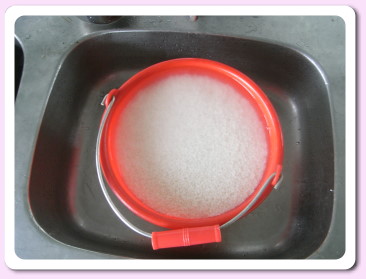
2.
Steam the soaked rice in a steamer for 1 to 2 hours,
and remove it from the stove when cooked.
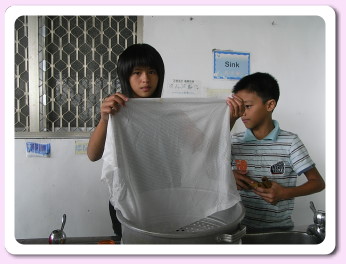 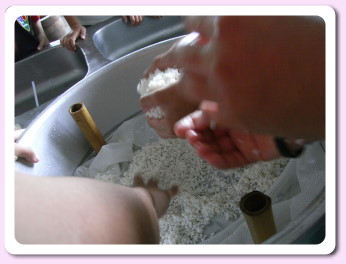
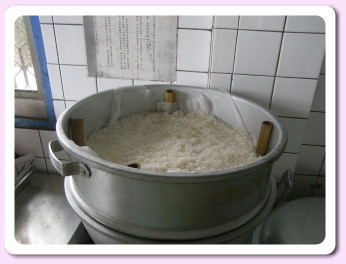 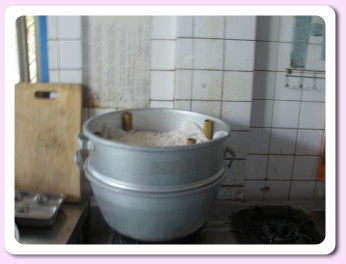
3.
Rub some oil onto your mortar and pestle to prevent
the rice from sticking.
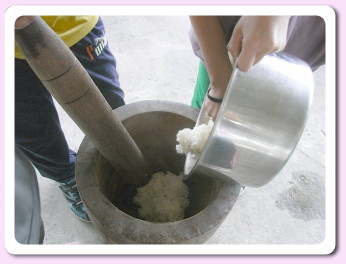 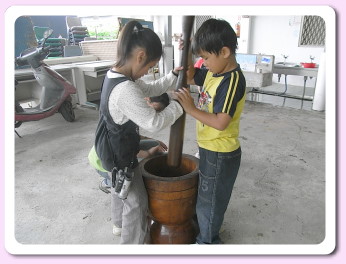
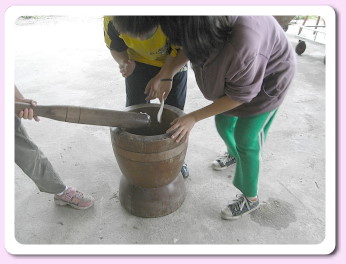 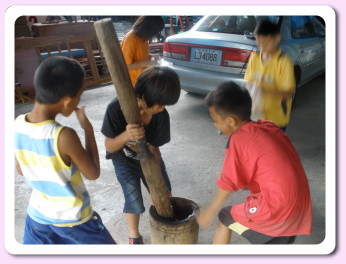
4.
Grind the steamed sticky rice with the mortar and
pestle until there are no visible grains, and you
have mochi. The mochi is more than you think,
because it symbolizes unequaled cooperation!
Grinding sticky rice requires the effort of two
people, one must pestle the rice, while the other
must turn the mochi over in the mortar. The one with
the pestle must be strong, and the one who turns the
mochi over must be quick and nimble. If these two
people don’t cooperate well, they wouldn’t be able
to produce tasty mochi quickly and efficiently!
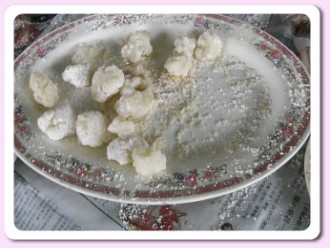
5.
The finished mochi can be dipped in powdered sugar,
ground peanuts, and if you like savory snacks, soy
sauce. It goes without saying that the original
flavor of the mochi is very good in itself, and
releases its flavor the more you chew on it. In our
experimental course, the mochi we produced by means
of hard labor was gone in minutes! That’s how good
it was![up]
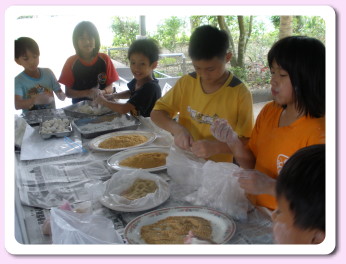 

1. How many
liters of rice do you need to make mochi? What kind
of rice is used? What preparations have to be made
for the rice?
It depends on how many people
you’re going to serve. Mochi is made with
short-grain sticky rice, and must be soaked for at
least 4 hours before steaming so it cooks more
easily.
2.
What do you need to watch out for when grinding the
mochi? Do you need to add any seasonings?
When you grind mochi, always add
a little oil or starch to the mortar and pestle so
that it doesn’t stick. Use your strength when
grinding mochi, because good mochi can’t be made
without a lot of strength and effort. You can season
the mochi according to your personal preference, it
can be either sweet or savory, but most people like
to eat it as a sweet snack.[up]

|

Hsue-ke Chiu
|
I thought grinding mochi would be
a piece of cake, but the rice got stickier and
stickier, the pestle became heavier and heavier, and
I got so tired I didn’t want to grind anymore.
Afterwards, when we were enjoying the mochi, I
discovered that while everyone else ate only a
little, I kept eating and ate a lot, and that made
me sort of embarrassed! |
|

Ting-hsuan
Kao |
Mochi is the tastiest dish of the
aboriginal people, and it’s readily available
everywhere in gift shops and stores. But the store
bought mochi tastes nothing like what we made
ourselves. We made our mochi with loving care, added
no artificial flavorings, and its taste is so good
it would make your mouth water. We hope that
everyone will try and use their own two hands to
make delicious homemade mochi. |
|

Yu-qin
Ma |
When we were making mochi, I saw
that mortars and pestles were used, and it looked
like a lot of effort to me. When it was my turn, I
worked myself into a sweat, but got to eat delicious
as a reward for my efforts. I thought the mochi was
deliciously soft and sticky, and so extremely tasty
I’ll be able to have some more soon.[up] |

Reference:
1.
2011.5.2, Sinbaiyang Cultural Information Club
Experimental Course Process (Mochi) |
|

